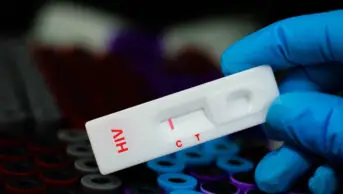
Shutterstock.com / JL
Almost everyone experiences short bouts of pain now and then, from period pain to the dreaded toothache. When symptoms begin, many people will either visit their GP for a prescription or their pharmacy for an over-the-counter (OTC) medicine. However, new restrictions by NHS England on prescribing OTC analgesics means that more patients will be turning to the pharmacy. This presents both a challenge to ensure that pharmacy teams know what they are doing and an opportunity to demonstrate that they are best placed to manage self-limiting conditions.
Owing to the increasingly crucial role of promoting self-care in helping patients manage acute pain, The Pharmaceutical Journal, with the support of RB, has devised an editorial campaign to support the entire pharmacy team at this critical time.
The campaign launched with a survey being sent to members of the Royal Pharmaceutical Society (RPS) in order to determine the number of pharmacy consultations being carried out for acute pain, and the first-line and second-line treatment recommendations being given for a range of indications. The survey also asked the respondent’s level of previous training and the role of other members of their pharmacy team in this area. More than 1,000 people responded and around 35% stated that, on average, they spoke to adult patients about acute pain two to five times per day. The respondents explained that their patients interact with most members of the pharmacy team and gave a wide range of differing responses for the treatment of acute pain. For example, the survey revealed that more than 20% of respondents would recommend co-codamol as first-line treatment of migraine, which goes against the British Association for the Study of Headache guidelines. These results showed the inconsistent advice given to patients about the wide range of analgesics that can be taken at a low dose and over a short duration, and which medicines provide efficacious and safe pain relief.
Evidently, there is confusion around the guidance and treatment recommendations for different acute pain indications. To better understand this variation and how pharmacy can meet patient demand, we held a round-table discussion on the clinical guidance and evidence base for pain management.
We have also created a Pharmacy Learning Centre
— an education platform focusing on the management of acute pain in community pharmacy, which is free to access. It aims to challenge existing behaviours, support understanding of the evidence base, and provide pharmacists and their teams with the knowledge and skills they need to apply best practice in acute pain management.
This is a call to action for those working in pharmacy to start a new learning journey. This begins with understanding the rationale for our campaign, the role pharmacists can play (as championed by Ash Soni, president of the RPS) and ends with three learning articles that will be published in the coming months. The first of these will explain how to understand the efficacy and safety of oral OTC analgesics in the context of acute pain relief; the second will run alongside this and explain how to correctly interpret the relevant clinical data, including the different types of studies used to assess pain. The final learning article will provide practical information on how to consult with patients, implement clinical guidance and apply the evidence base. Through this, pharmacists will undoubtedly be able to put patients at the centre of the care pathway and promote self-care for acute pain.


